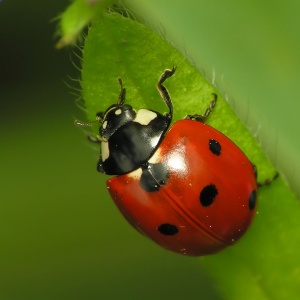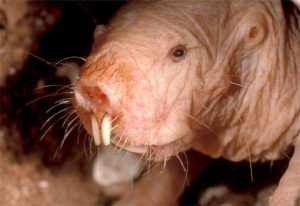 The University of Granada found that ladybugs are a useful way of distinguishing organic, conventional and integrated farming systems.The university said a two-year study of three large Spanish olive groves showed the “richness and abundance” of ladybugs was higher in organic orchards. Spanish researchers say ladybugs in olive orchards are a good indicator of the groves’ health and sustainability.
The University of Granada found that ladybugs are a useful way of distinguishing organic, conventional and integrated farming systems.The university said a two-year study of three large Spanish olive groves showed the “richness and abundance” of ladybugs was higher in organic orchards. Spanish researchers say ladybugs in olive orchards are a good indicator of the groves’ health and sustainability.
Ladybugs, also called lady beetles or ladybird beetles, are a very beneficial group. They are natural enemies of many insects, especially aphids and other sap feeders. A single lady beetle may eat as many as 5,000 aphids in its lifetime. There are many species of lady beetles.
Protection for the plants and the ladybugs
Adult lady beetles have very characteristic convex oval shaped bodies that can be yellow, pink, orange, red, or black, and usually are marked with distinct spots. This bold coloring, noxious fluid that seeps out of their joints when they are disturbed and strong odor they give off warns other animals to stay away. when the insects are disturbed.

Adult females will lay clusters of yellowish eggs on plants in the vicinity of aphid, scale, or mealybug colonies.
The alligator-like larvae (pictured below) are also predators. They are spiny and black with bright spots.
Adult lady beetles have very characteristic convex, hemispherical to oval shaped bodies that can be yellow, pink, orange, red, or black, and usually are marked with distinct spots. This is a type of warning coloration to discourage other animals that may try to eat them. Like many other brightly-colored insects,they are protected by an odorous, noxious fluid that seeps out of their joints when the insects are disturbed. The bright body coloration helps some predators to remember the encounter and avoid attacking insects with similar markings.
Ladybug larvae are helpful to humans because they eat the insect pests in the garden. After feeding on insect prey for several weeks, the larva pupates on a leaf.

Some lady beetle species have several generations each year while others have only one. During the summer months, all stages can often be found at the same time. Adults of some species spend the winter clustered together in large groups under leaf litter, rocks, or other debris.
Resources
Ladybugs a sign of healthy olive trees – Staff Writers, Granada, Spain (UPI) January 7, 2009.
http://www.seeddaily.com/reports/Ladybugs_a_sign_of_healthy_olive_trees_999.html
LADYBUGS – Ric Bessin, Extension Entomologist University of Kentucky College of Agriculture
http://www.ca.uky.edu/entomology/entfacts/ef105.asp
Images courtesy of
Image 1: http://groups.wfu.edu/Phi-Mu/ladybug.JPG
Image 2 & 3: Ric Bessin, Extension Entomologist
University of Kentucky College of Agricultur
What other topics do you want to know more about? Let us know.
 the sting of the capsaicin from chili peppers. This animal lacks the chemical hormone Substance P, which causes the feeling of burning pain in mammals. “Substance P is important specifically to the long-term, secondary-order inflammatory pain. It’s the pain that can last for hours or days when you pull a muscle or have a surgical procedure,” he explained.
the sting of the capsaicin from chili peppers. This animal lacks the chemical hormone Substance P, which causes the feeling of burning pain in mammals. “Substance P is important specifically to the long-term, secondary-order inflammatory pain. It’s the pain that can last for hours or days when you pull a muscle or have a surgical procedure,” he explained.
You must be logged in to post a comment.